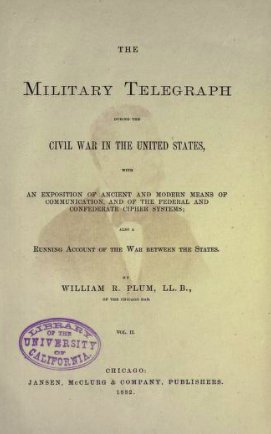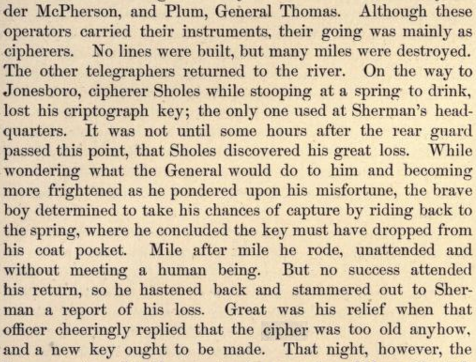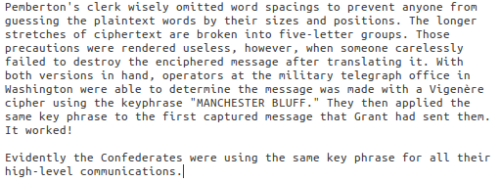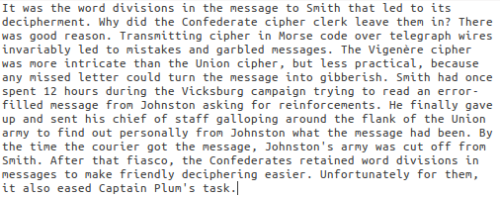William Plum published a book in 1882 called “The Military Telegraph During the Civil War in the United States: an Exposition of Ancient and Modern Means of Communication, and of the Federal and Confederate Cipher System“.

Inside you will find gems of history such as page 185: the time when a U.S. Army operator let a cipher key fall out his pocket as he took a drink at a spring.

The story actually ends with “…the key was returned to the operator by a member of Howard’s staff, who found it at the spring.”
The Union had developed basic cipher to protect its signals and believed the Confederates never broke it.

By comparison, the bumbling Confederates used the same key for all high-level communication.

A whole series of messages had been deciphered by using the names of Confederate generals as key words!
In other words (pun intended), it was three bored teenagers hanging around the Union HQ during Civil War who easily defeated Confederate cryptography.
In addition to poor implementation, Confederate design wasn’t good either. The messy transmission on telegraph wires resulted in them weakening ciphers instead of developing integrity checks.

Spending 12 hours to reconstruct a message calling for immediate reinforcements is peak integrity failure, followed by a confidentiality disaster of weakening the cipher. Bad decisions all the way down.
To be fair Confederates allegedly did not cipher much.

But clearly they still encoded things like an 1864 request to take Bishop Polk’s corpse from the top of Pine Mountain where Sherman swiftly and easily killed the traitor.
See also my 2011 post called “Civil War Vignere Cipher Code Decrypted“.